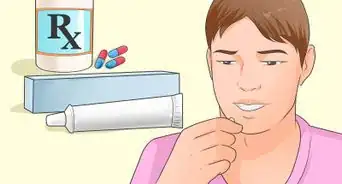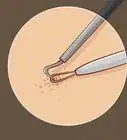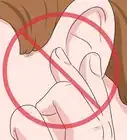This article was co-authored by Kaveri Karhade, MD. Dr. Kaveri Karhade is a board certified Laser, Medical, and Cosmetic Dermatologist in the San Francisco Bay Area. Her areas of expertise are acne and hair loss. She has advanced training in injectables, lasers, surgery, and other cosmetic treatments, and has published extensive research in medical journals. She holds a BS from Michigan State University and a Doctor of Medicine (MD) from the University of Michigan Medical School. She completed her internship in Internal Medicine at New York University School of Medicine and her Residency in Dermatology at Brown University School of Medicine. Dr. Karhade is a fellow of the American Academy of Dermatology and a member of the American Society for Dermatologic Surgery.
There are 37 references cited in this article, which can be found at the bottom of the page.
This article has been viewed 3,516 times.
Are you noticing small, hairlike structures on the tip of your nose? If so, you may have sebaceous filaments. Although they look similar to pesky blackheads, sebaceous filaments are perfectly normal and healthy (so there’s no need to panic pop them). However, there are things you can do to minimize their appearance. In this article, we’re going over everything you need to know about these oily strands, including natural home remedies and sample skincare routines that will help make them less noticeable.
Things You Should Know
- Sebaceous filaments cannot be permanently removed, but you can decrease their appearance.
- To minimize sebaceous filaments, exfoliate your face with a salicylic acid treatment twice a day, and incorporate a retinol serum into your nighttime routine.
- Reduce sebum production naturally by applying a kaolin clay mask once a week.
- Blackheads and sebaceous filaments are not the same. Sebaceous filaments move oil to the skin’s surface, while blackheads completely clog your pores.
Steps
References
- ↑ https://youtu.be/1ECdYwxC3vs?t=52
- ↑ https://www.ncbi.nlm.nih.gov/pmc/articles/PMC7875663
- ↑ https://pubmed.ncbi.nlm.nih.gov/130839
- ↑ https://youtu.be/1ECdYwxC3vs?t=121
- ↑ https://youtu.be/HjgQliOEfso?t=46
- ↑ https://youtu.be/1ECdYwxC3vs?t=165
- ↑ https://www.mayoclinic.org/drugs-supplements/salicylic-acid-topical-route/proper-use/drg-20066030
- ↑ https://youtu.be/YJxARaLMSpc?t=757
- ↑ https://youtu.be/1ECdYwxC3vs?t=210
- ↑ https://youtu.be/grxmyM7EuDk?t=497
- ↑ https://www.aocd.org/page/Retinoidstopical
- ↑ https://youtu.be/grxmyM7EuDk?t=724
- ↑ https://youtu.be/grxmyM7EuDk?t=587
- ↑ https://www.aad.org/public/everyday-care/skin-care-secrets/anti-aging/retinoid-retinol
- ↑ https://www.cnn.com/cnn-underscored/beauty/niacinamide-skin-benefits
- ↑ https://youtu.be/1ECdYwxC3vs?t=407
- ↑ https://youtu.be/1ECdYwxC3vs?t=254
- ↑ https://youtu.be/UMhfXzIcBbI?t=253
- ↑ https://youtu.be/jERTox8_PhY?t=281
- ↑ https://www.ncbi.nlm.nih.gov/pmc/articles/PMC2904249
- ↑ https://youtu.be/nIAsIyYwwrg?t=259
- ↑ https://www.ncbi.nlm.nih.gov/pmc/articles/PMC5632318
- ↑ https://www.mayoclinic.org/drugs-supplements-tea-tree-oil/art-20364246
- ↑ https://www.ncbi.nlm.nih.gov/pmc/articles/PMC8175793
- ↑ https://www.ncbi.nlm.nih.gov/pmc/articles/PMC6471406
- ↑ https://www.health.harvard.edu/staying-healthy/how-much-water-should-you-drink
- ↑ https://www.ncbi.nlm.nih.gov/pmc/articles/PMC2577647
- ↑ https://www.aad.org/public/everyday-care/skin-care-basics/dry/oily-skin
- ↑ https://www.skincancer.org/blog/ask-the-expert-how-much-sunscreen-should-i-be-using-on-my-face-and-body
- ↑ https://youtu.be/1ECdYwxC3vs?t=379
- ↑ https://youtu.be/1ECdYwxC3vs?t=400
- ↑ https://youtu.be/SMwVOFU6SSo?t=155
- ↑ https://youtu.be/MkPXwbjaG0I?t=76
- ↑ https://youtu.be/TJRZMirbHZg?t=582
- ↑ https://youtu.be/gYm0xX7HwzE?t=282
- ↑ https://www.aad.org/public/fad/how-to-select-a-derm
- ↑ https://www.ncbi.nlm.nih.gov/pmc/articles/PMC5605215

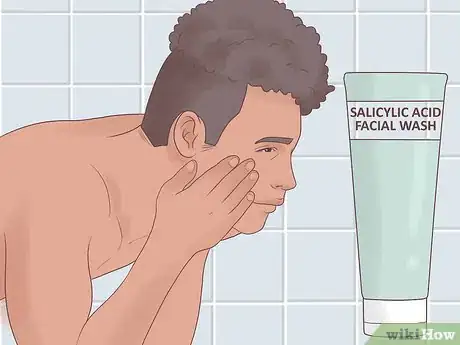
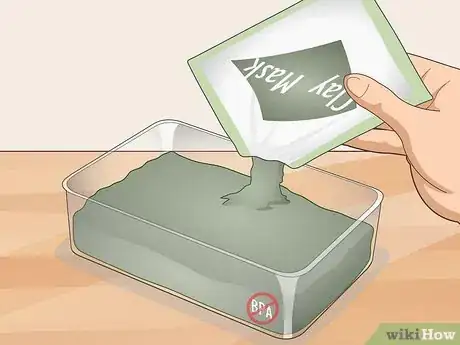
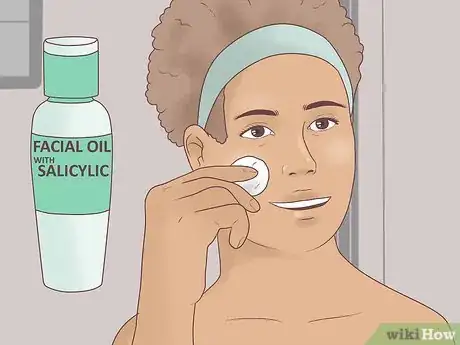

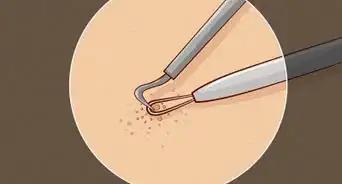



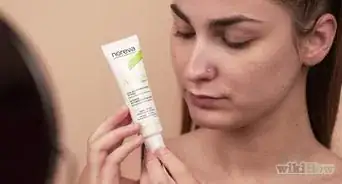



-Step-9.webp)

